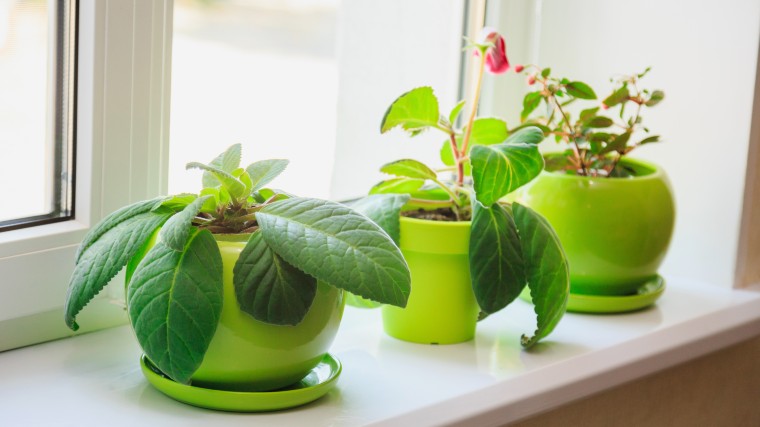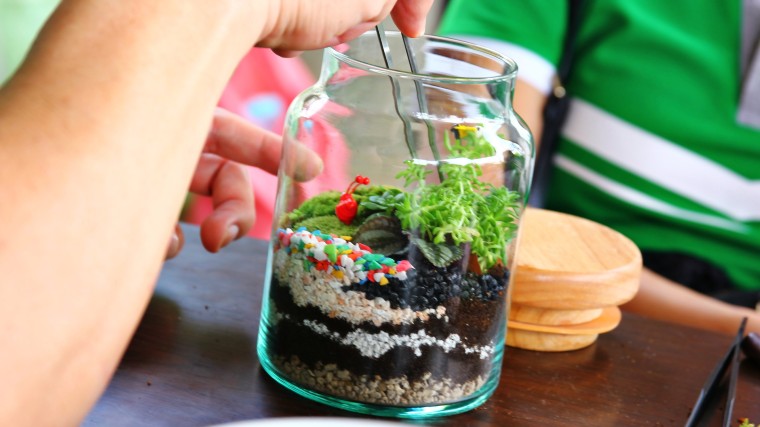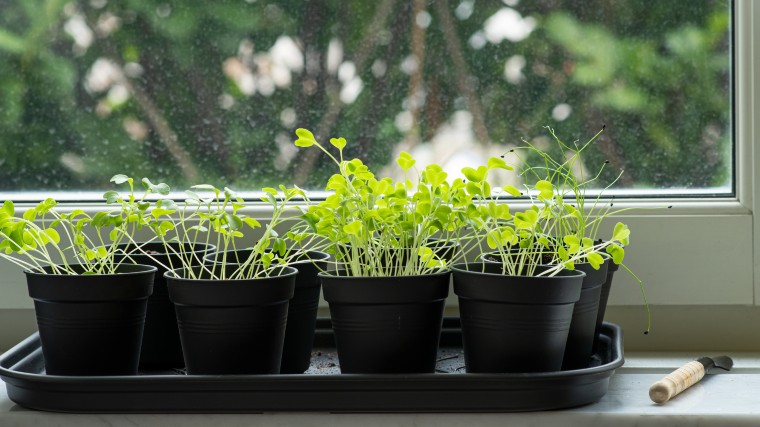Three excellent indoor gardening ideas for seniors
Enjoy growing plants? These indoor gardening ideas might be for you.
Indoor gardening is a great activity for seniors at home. It can help lower stress, improve mobility and boost brain health. It is also adaptable, allowing you to modify the activities according to personal preferences, the weather or to meet a variety of abilities.
Before we begin exploring some great ideas, here are some important indoor gardening tips to be mindful of:
- Stay safe - Be aware of plants that could be poisonous when ingested. This is especially important if you are living with dementia or planning indoor gardening activities for loved ones who are living with the condition.
- Go for lightweight tools - It can be tiring to use gardening tools for lengths of time. Use lighter weight tools whenever possible.
- Get comfortable - Make sure there is somewhere to sit while you work on your indoor garden. This makes the activity more relaxing, and allows you to rest when the activity becomes a bit tiring.
- Costs - Upcycling things from the home can reduce costs associated with creating and maintaining your indoor garden.
_______________________________
Here are some wonderful indoor gardening ideas for you to explore:
-
Pots on a windowsill

Growing plants on your windowsill is a fun way to get into gardening while avoiding overexerting yourself physically. It is also a creative choice for an indoor garden because of the colours they can bring into your home.
But before you begin...
-
Here are some important points to consider:
- Find out what direction your window faces and how much sun it gets before you choose your plants based on their light requirements.
- Measure your windowsill and choose your pots or planters based on what will fit.
-
What you need:
- Pots (or upcycled teapots, mugs)
- Soil
- Plants
- Small shovel to assist with planting your plants
- Watering can
-
How to:
- Set up your pot with soil and plant your plants.
- Water thoroughly, allowing the water to drain from the pot before placing on your windowsill.
- Check plants for signs of stress and dehydration and water as required.
-
Recommended plants:
- Succulents
- Cactus
- These plants are slow-growing and tolerate a range of light levels. They also require little watering and are easy to manage – perfect for growing on windowsills.
-
-
Terrarium

Let your imagination run wild when you create your terrarium. You can either purchase the materials separately or get a DIY kit.
-
Some important points to consider before you begin:
- Choose a container with a wide mouth. Suitable containers include goldfish bowls, bell jars, mason jars, glass cookie jars, and aquariums.
- If you choose a container with a lid, very little attention will be needed after you plant your garden as it will water itself.
- Terrariums without lids are less likely to experience problems with condensation and fungal plant diseases
- Look for plants that thrive in low-to-medium light. Avoid fast-growing plant species that develop large leaves that can block light.
-
What you need:
- Glass container (with or without lid)
- Small pebbles or stones
- Activated/horticultural charcoal
- Plants
- Soil
- Small tongs or long tweezers to assist with placing your plants.
-
How to:
- Set up your glass container and add a layer of pebbles or stones for drainage
- Add a layer of charcoal to prevent toxins and bacteria that causes mould or odours
- Add a layer of soil (at least a few inches)
- Plant your plants.
-
Recommended plants:
- Ferns – Maidenhair, Birds nest, Button ferns
- Carnivorous plants – Venus fly traps, Pitcher plants, Sundew plants
- Dwarf palms
- Air plants – Tillandsia
- Succulents- cacti, Hawthornia, Echeveria, Crassula, etc.
- Peperomia.
- Give your terrarium a light spray of water, though not too often to keep it damp but not soaking wet.
-
-
Mini herb kitchen garden

Growing your own mini kitchen garden can help you stretch your budget and ensure a well-rounded diet. The seeds required for growing are also relatively cheap and easy to obtain.
-
Some important points to consider before you begin:
- Avoid herbs with a woody, bushy growth, such as standard rosemary
- Indoor herb gardens thrive better when placed in a well-lit location and conditions that are cool with good air circulation.
-
What you need:
- Pots or garden box
- Soils
- Herb seedlings
- Hand rake
- Mini garden hoe
- Small shovel
-
How to:
- Fill half pot or garden box with soil
- Plant the herb seeds
- Water thoroughly, allowing the water to drain from the pot or garden box before placing in desired location
- Place tray under pot or garden box to catch any dripping water
- Most herbs require regular maintenance – loosen the soil and give it a feed and water every two weeks
- Harvest as needed.
-
Recommended plants:
- Thyme
- Mint
- Basil
- Coriander
- Sage
- Chives
-
Whichever idea or ideas you decide to try, the main aim is to enjoy the process. You can always customise and do a mix-and-match to get a good variety going. Indoor gardening activities for seniors is a great way to get creative and enjoy adding fresh greenery to your home.
Happy planting!